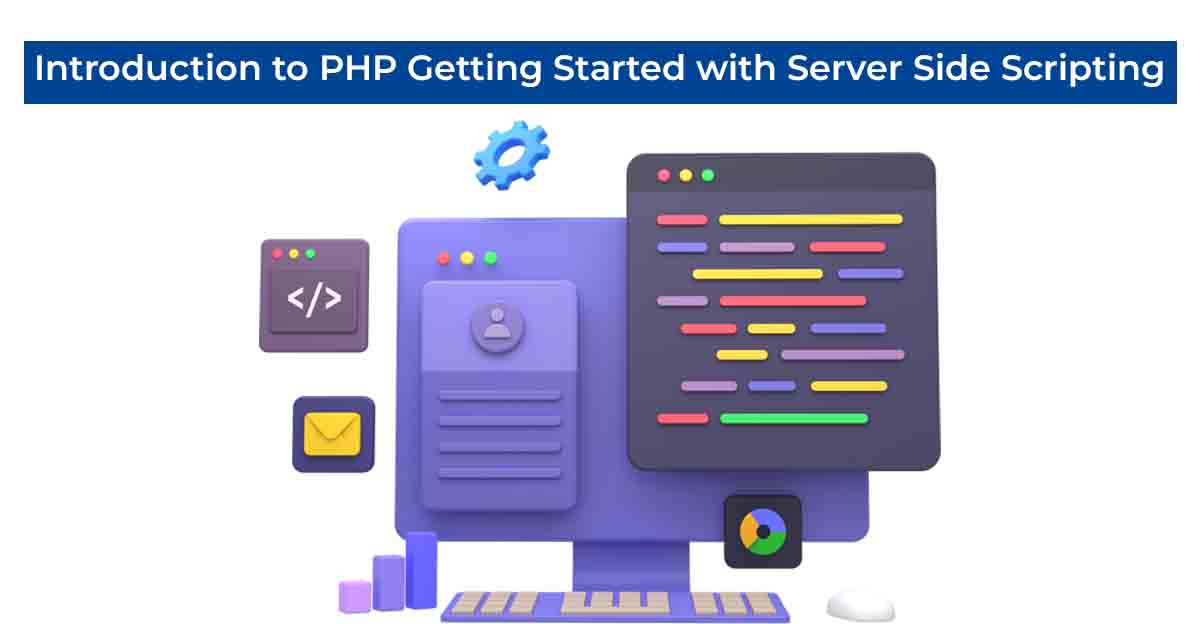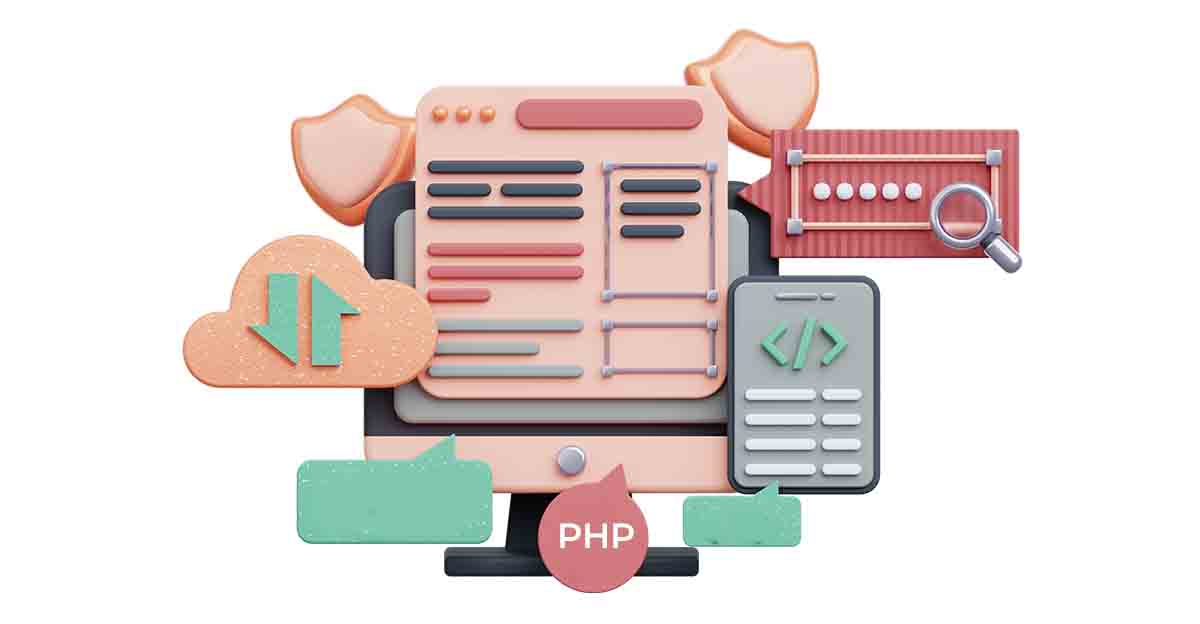The server-side programming language PHP, or Hypertext Preprocessor, is frequently used in web development. In this article, we will delve into the fundamentals of PHP, its applications, and why it’s essential for aspiring web developers.
Guide to PHP Web Development:
Ensuring Consistency and Readability with Coding Standards and Conventions

Introduction to PHP
What is PHP?
PHP is an effective scripting language designed specifically for creating websites. It is particularly suited for server-side programming that involves dynamically generating web pages. PHP scripts run on the server and produce client-side content—HTML, CSS, and others—that is transmitted to the user’s browser.
Importance of Server-Side Scripting
Server-side scripting plays a crucial role in web development by enabling dynamic content generation, database interaction, and user authentication. PHP is a server-side scripting language that gives programmers the ability to make dynamic, interactive websites.
Why Learn PHP?
Understanding the Scripting Language opens up a world of opportunities in web development. It is widely used across various platforms and is compatible with different operating systems, making it a versatile choice for developers. Moreover, PHP boasts a vast community and extensive documentation, making it easier for beginners to learn and grow.
Understanding PHP Basics
Syntax and Structure
PHP syntax is similar to that of C and Perl, making it easy for programmers familiar with these languages to adapt. A PHP script is enclosed within <?php and ?> tags and can be embedded directly into HTML pages.
Variables and Data Types
Like most programming languages, PHP supports various data types such as integers, strings, arrays, and objects. Variables in PHP are declared using the $ symbol followed by the variable name.
Operators
PHP includes a wide range of operators for performing arithmetic, comparison, and logical operations. These operators enable developers to manipulate variables and control program flow efficiently.
Server-side Scripting with PHP
How PHP Works on the Server
The web server runs the Server-side Scripting with PHP in response to a user request for a PHP page, producing HTML output that is then transmitted back to the user’s browser. This server-side execution ensures that sensitive information and business logic remain secure on the server.
Integrating PHP with HTML
Because PHP and HTML can work together effortlessly, developers can insert PHP code straight into HTML documents. This integration facilitates the creation of dynamic web pages with server-side processing capabilities.
Basic PHP Scripts
PHP scripts can perform a wide range of tasks, from processing form data and interacting with databases to generating dynamic content based on user input. Basic PHP scripts typically involve retrieving data from external sources, processing it, and generating output for display.
Fullstack Development Course in Jaipur
Overview of Fullstack Development
All facets of web application development are covered by full-stack development, which combines frontend and backend development. A full-stack developer is skilled in both backend and frontend technologies, including Python, Node.js, and PHP as well as HTML, CSS, and JavaScript.
Benefits of Taking a Course in Jaipur
Jaipur, known for its vibrant culture and rich heritage, is emerging as a hub for technology and innovation. Taking a full-stack development course in Jaipur offers students the opportunity to learn in a dynamic environment while exploring the city’s cultural heritage.
Opportunities in Fullstack Development
With the increasing demand for web applications and digital services, full-stack developers are in high demand across industries. By mastering both frontend and backend technologies, developers can pursue lucrative career opportunities in web development, software engineering, and IT consulting.
Guide on PHP Web Development
Tools and Frameworks for PHP Development
PHP developers have access to a wide range of tools and frameworks to streamline the development process. Popular PHP frameworks such as Laravel, Symfony, and CodeIgniter provide developers with robust libraries and pre-built components for building scalable web applications.
Best Practices in PHP Programming
To write efficient and maintainable code, PHP developers should adhere to best practices such as modularization, code reusability, and error handling. Following coding standards and conventions ensures consistency and readability across projects.
Resources for Learning PHP
For aspiring PHP developers, there are plenty of resources available online, including tutorials, documentation, and community forums. Websites like PHP.net, Stack Overflow, and Laracasts offer comprehensive learning materials for beginners and experienced developers alike.
Setting Up PHP Environment
Installing PHP
Setting up a PHP development environment is relatively straightforward, thanks to pre-packaged solutions like XAMPP, WAMP, and MAMP, which include PHP, Apache, and MySQL.
Configuring Web Server
Configuring a web server to run PHP scripts involves configuring the server’s settings to recognize and execute PHP files. This process may vary depending on the server software being used (e.g., Apache, Nginx).
IDEs for PHP Development
Integrated Development Environments (IDEs) like PhpStorm, Visual Studio Code, and NetBeans provide developers with powerful tools for writing, debugging, and testing PHP code. Features like code completion, syntax highlighting, and version control integration are available in these IDEs.
Creating Dynamic Web Pages with PHP

Handling Forms and User Input
PHP excels in processing form data submitted by users. With PHP, developers can validate input fields, sanitize data to prevent security vulnerabilities like SQL injection and perform actions based on user interactions, such as submitting a form or clicking a button.
Working with Databases
One of PHP’s strengths lies in its ability to interact with databases seamlessly. Using extensions like MySQLi or PDO, developers can connect PHP scripts to databases such as MySQL, PostgreSQL, or SQLite. This capability enables dynamic content generation, user authentication, and data manipulation within web applications.
Generating Dynamic Content
PHP facilitates the creation of dynamic web content by enabling developers to embed PHP code directly into HTML templates. This allows for the generation of personalized content based on user preferences, database queries, or external APIs. Dynamic content enhances user experience and keeps web applications relevant and engaging.
Advanced PHP Concepts
Object-Oriented Programming in PHP
PHP supports object-oriented programming (OOP) principles, allowing developers to organize code into reusable classes and objects. OOP enhances code modularity, extensibility, and maintainability, making complex applications easier to develop and maintain.
Error Handling and Debugging
Effective error handling is essential for identifying and resolving issues in PHP applications. PHP provides mechanisms for catching and handling errors, including try-catch blocks, custom error handlers, and logging functions. Debugging tools like Xdebug further streamline the debugging process by providing insights into code execution and variable values.
Exploring PHP Frameworks
Overview of Popular PHP Frameworks
PHP frameworks provide developers with a structured approach to web application development, offering libraries, components, and conventions to accelerate the development process. Laravel, Symfony, and CodeIgniter are among the most popular PHP frameworks, each catering to different development needs and preferences.
Choosing the Right Framework for Your Project
Selecting the appropriate PHP framework depends on factors such as project requirements, scalability, community support, and developer familiarity. Laravel, known for its elegant syntax and robust features, is ideal for building modern web applications, while Symfony offers flexibility and extensibility for complex projects. CodeIgniter, with its lightweight footprint and ease of use, is suitable for rapid prototyping and smaller applications.
Building Scalable Web Applications
Design Patterns in PHP
Design patterns provide reusable solutions to common software design problems, promoting code organization, flexibility, and maintainability. PHP developers can leverage design patterns like MVC (Model-View-Controller), Factory, Singleton, and Observer to architect scalable and maintainable web applications.
Scaling PHP Applications for high-traffic
As web traffic increases, scaling PHP applications becomes crucial to maintain performance and reliability. Techniques such as load balancing, caching, database optimization, and horizontal scaling ensure that PHP applications can handle large volumes of traffic efficiently.
Performance Optimization Techniques
Optimizing PHP code and server configurations is essential for improving application performance and reducing response times. Strategies such as code profiling, database indexing, opcode caching, and asynchronous processing enhance PHP application performance, resulting in better user experience and higher throughput.
Deploying PHP Applications
Hosting Options for PHP Applications
PHP applications can be deployed on various hosting platforms, including shared hosting, virtual private servers (VPS), dedicated servers, and cloud hosting services like AWS, Google Cloud, and Azure. Each hosting option offers different levels of scalability, control, and resource allocation to accommodate different project requirements.
Continuous Integration and Deployment
Continuous integration (CI) and continuous deployment (CD) practices automate the process of building, testing, and deploying PHP applications, reducing human error and speeding up the release cycle. CI/CD tools like Jenkins, Travis CI, and GitLab CI integrate seamlessly with version control systems and hosting platforms, enabling developers to deploy code changes rapidly and reliably.
Future of PHP
Trends in PHP Development
In recent years, PHP development has witnessed trends such as microservices architecture, serverless computing, and API-driven development. These trends reflect a shift towards modular, scalable, and agile development practices, enabling developers to build robust and resilient PHP applications that meet the demands of modern web development.
Career Opportunities
Despite the emergence of new technologies and frameworks, PHP remains a prominent choice for web development, offering stable career opportunities for developers worldwide. With its widespread adoption, rich ecosystem, and continuous innovation, PHP presents a promising career path for aspiring web developers and seasoned professionals alike.
Conclusion
In conclusion, PHP serves as a cornerstone of web development, empowering developers to create dynamic, interactive, and scalable web applications. By mastering PHP fundamentals, exploring advanced concepts, and embracing best practices, developers can harness the full potential of PHP to build innovative solutions and shape the future of web development.





